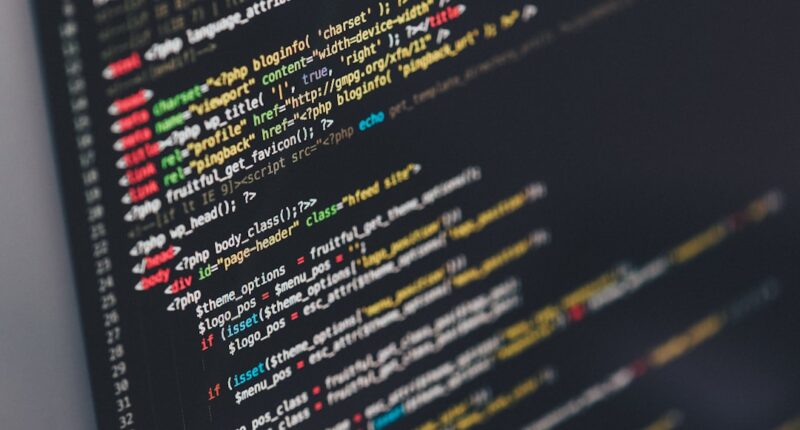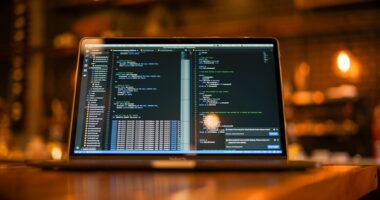NFTs, or non-fungible tokens, have taken the digital world by storm in recent years. These unique digital assets are used to represent ownership of a specific item or piece of content, such as artwork, videos, music, and more. NFT minting is the process of creating and issuing these digital tokens on a blockchain network, which ensures their authenticity and scarcity. When an NFT is minted, it is assigned a unique identifier that cannot be replicated or exchanged for something else, making it one-of-a-kind and valuable to collectors and enthusiasts.
Minting NFTs involves using blockchain technology to create a digital certificate of ownership for a particular piece of content. This process typically requires the use of a specialized platform or marketplace that supports NFT creation and issuance. Once an NFT is minted, it can be bought, sold, and traded on various NFT marketplaces, allowing creators to monetize their digital assets and collectors to invest in unique and rare items. The rise of NFTs has opened up new opportunities for artists, content creators, and collectors to participate in the digital economy and showcase their work in a unique and innovative way.
Step-by-Step Guide to Minting NFTs
Minting NFTs may seem like a complex process, but with the right tools and resources, it can be relatively straightforward. Here’s a step-by-step guide to minting NFTs:
1. Choose a Blockchain: The first step in minting an NFT is to choose a blockchain network that supports NFT creation. Ethereum is currently the most popular choice for minting NFTs, but other blockchains such as Binance Smart Chain and Flow also support NFT creation.
2. Select an NFT Marketplace: Once you’ve chosen a blockchain, you’ll need to select an NFT marketplace or platform that supports NFT minting. Platforms like OpenSea, Rarible, and Mintable are popular choices for minting and selling NFTs.
3. Create a Wallet: To mint an NFT, you’ll need a digital wallet that supports the blockchain network you’ve chosen. Popular wallets for Ethereum-based NFTs include MetaMask and Trust Wallet.
4. Upload Your Content: After setting up your wallet, you can upload the digital content you want to tokenize as an NFT. This could be artwork, music, videos, or any other digital asset.
5. Mint Your NFT: Once your content is uploaded, you can proceed to mint your NFT on the selected marketplace. This process typically involves setting a price for your NFT and paying a small transaction fee to complete the minting process.
6. List Your NFT for Sale: After minting your NFT, you can list it for sale on the marketplace, where it will be available for purchase by collectors and enthusiasts.
By following these steps, you can successfully mint your own NFT and participate in the growing digital collectibles market.
NFT Jobs: Opportunities in the NFT Industry
The rise of NFTs has created a range of new job opportunities in the digital art, technology, and finance sectors. As the demand for NFTs continues to grow, so does the need for professionals with expertise in blockchain technology, digital art creation, marketing, and sales. Some of the most in-demand NFT jobs include blockchain developers, digital artists, marketing specialists, and NFT platform managers.
Blockchain developers play a crucial role in the NFT industry by creating and maintaining the infrastructure that supports NFT creation and trading. These professionals are responsible for building and optimizing blockchain networks and smart contracts that power NFT marketplaces and platforms. Digital artists are also in high demand as the popularity of NFT art continues to soar. These individuals create unique and original digital artwork that can be tokenized as NFTs and sold to collectors and art enthusiasts. Marketing specialists are essential for promoting NFTs and attracting buyers to digital marketplaces. They use their expertise in digital marketing and social media to raise awareness of NFTs and drive sales for creators and platforms. Additionally, NFT platform managers are needed to oversee the operations of NFT marketplaces and ensure a smooth experience for users.
As the NFT industry continues to evolve, new job opportunities are likely to emerge, creating exciting prospects for professionals looking to enter this innovative and fast-growing sector.
NFT Artists: How to Create and Sell NFT Art
| Artist | Number of NFTs Created | Platform Used | Average Sale Price |
|---|---|---|---|
| Alice Smith | 25 | OpenSea | 0.5 ETH |
| Bob Johnson | 15 | Rarible | 1 ETH |
| Charlie Brown | 10 | Foundation | 2 ETH |
For artists looking to capitalize on the growing popularity of NFTs, creating and selling digital art as non-fungible tokens can be a lucrative opportunity. Here’s how artists can get started with creating and selling NFT art:
1. Create Unique Digital Art: The first step in selling NFT art is to create original and unique digital artwork that will appeal to collectors and enthusiasts. This could include illustrations, animations, 3D models, or any other form of digital art.
2. Choose an NFT Marketplace: Once your artwork is ready, you’ll need to select an NFT marketplace or platform where you can mint and sell your NFTs. Popular marketplaces like OpenSea, Rarible, and Foundation are great options for showcasing and selling digital art as NFTs.
3. Set Up a Digital Wallet: To mint and sell NFT art, you’ll need to set up a digital wallet that supports the blockchain network you’ve chosen for minting your NFTs. This will allow you to receive payments from buyers when your NFTs are sold.
4. Mint Your Artwork as an NFT: After setting up your wallet, you can proceed to mint your artwork as an NFT on the selected marketplace. This involves uploading your artwork, setting a price for your NFT, and paying a small transaction fee to complete the minting process.
5. Promote Your NFT Art: Once your artwork is minted as an NFT, it’s important to promote it to potential buyers. Use social media, online communities, and digital art forums to showcase your work and attract collectors who may be interested in purchasing your NFTs.
By following these steps, artists can successfully create and sell their digital art as non-fungible tokens, tapping into the growing market for digital collectibles and unique digital assets.
NFT News: Staying Updated on the Latest NFT Trends and Developments
Staying informed about the latest trends and developments in the world of NFTs is crucial for anyone looking to participate in this fast-growing industry. With new projects, partnerships, and innovations constantly emerging in the NFT space, keeping up with the latest news can provide valuable insights and opportunities for creators, collectors, and investors.
One way to stay updated on the latest NFT news is by following industry-leading publications and websites that cover developments in the world of non-fungible tokens. Websites like CoinDesk, Decrypt, and The Block regularly publish news articles and analysis on the latest trends in the NFT space, providing valuable information for anyone looking to stay informed about this rapidly evolving industry.
Another way to stay updated on NFT news is by following key figures and influencers in the space on social media platforms like Twitter and Discord. Many industry experts regularly share insights, updates, and analysis on their social media channels, providing valuable information for those looking to stay informed about the latest developments in the world of non-fungible tokens.
By staying informed about the latest trends and developments in the world of NFTs, creators, collectors, and investors can make informed decisions about their participation in this exciting and dynamic industry.
Navigating the NFT Marketplace: Tips for Buying and Selling NFTs

Navigating the NFT marketplace can be an exciting but daunting experience for newcomers looking to buy or sell non-fungible tokens. Whether you’re an artist looking to sell your digital art as an NFT or a collector looking to invest in unique digital assets, here are some tips for navigating the NFT marketplace:
For Buyers:
– Research Before Buying: Before purchasing an NFT, it’s important to research the artist or creator behind the artwork or digital asset. Look for information about their previous work, reputation in the industry, and track record of sales.
– Verify Authenticity: When buying an NFT, it’s crucial to verify its authenticity and provenance. Look for information about the token’s creation on the blockchain network it’s minted on to ensure its legitimacy.
– Set a Budget: With prices for NFTs ranging from a few dollars to millions of dollars, it’s important to set a budget before entering the marketplace. Determine how much you’re willing to spend on an NFT and stick to your budget when making purchases.
For Sellers:
– Showcase Your Work: When selling NFTs as an artist or creator, it’s important to showcase your work effectively on the marketplace. Use high-quality images or videos of your artwork and provide detailed descriptions to attract potential buyers.
– Engage with Collectors: Building relationships with collectors and enthusiasts can help increase interest in your NFTs. Engage with potential buyers through social media, online communities, and digital art forums to promote your work.
– Stay Informed About Trends: Keep an eye on trends in the NFT space to understand what types of digital assets are currently popular with collectors. This can help you tailor your creations to meet market demand.
By following these tips, both buyers and sellers can navigate the NFT marketplace with confidence and make informed decisions about buying or selling non-fungible tokens.
NFT Minting Platforms: Comparing the Best Platforms for Minting NFTs
When it comes to minting non-fungible tokens (NFTs), there are several platforms available that offer different features and capabilities for creators looking to tokenize their digital assets. Here’s a comparison of some of the best platforms for minting NFTs:
OpenSea: OpenSea is one of the largest and most popular marketplaces for buying, selling, and minting NFTs. It supports a wide range of digital assets including artwork, domain names, virtual worlds, and more. OpenSea also allows creators to create their own storefronts where they can showcase their collections of NFTs.
Rarible: Rarible is another popular platform for minting and selling NFTs. It offers a user-friendly interface that allows creators to easily upload their digital assets and tokenize them as non-fungible tokens. Rarible also features a decentralized governance model that allows users to vote on platform upgrades and changes.
Foundation: Foundation is a curated marketplace that focuses on supporting emerging digital artists. It offers a selective application process for creators looking to mint their artwork as NFTs, ensuring high-quality content on the platform. Foundation also provides tools for creators to engage with their audience through auctions and social features.
Mintable: Mintable is a user-friendly platform that allows creators to easily mint their digital assets as NFTs without any coding knowledge required. It offers features such as customizable royalties, gas-free minting for certain assets, and integration with popular blockchain networks like Ethereum.
When choosing a platform for minting NFTs, creators should consider factors such as user interface, fees, community engagement features, and support for different types of digital assets. By comparing these platforms, creators can find the best fit for their needs when it comes to minting non-fungible tokens.
Some popular NFT minting platforms include OpenSea, Rarible, and Mintable. OpenSea is known for its user-friendly interface and large community, but it also has higher fees compared to other platforms. Rarible offers unique community engagement features such as governance tokens and creator royalties, making it a good choice for artists looking to connect with their audience. Mintable stands out for its support of various digital assets, including videos and music, making it a versatile option for creators working with different types of media. By carefully considering these factors, creators can make an informed decision about which platform will best suit their NFT minting needs.
If you’re interested in learning more about how to mint an NFT, you should check out the article “Hello World” on NFT-Jobs.com. This article provides a comprehensive guide on the process of creating and minting your own NFTs, including tips and best practices for success in the NFT marketplace. You can find the article here.
FAQs
What is an NFT?
An NFT, or non-fungible token, is a digital asset that represents ownership or proof of authenticity of a unique item or piece of content, such as artwork, music, videos, or collectibles, using blockchain technology.
How do you mint an NFT?
To mint an NFT, you need to choose a blockchain platform that supports NFTs, such as Ethereum or Binance Smart Chain, and use a compatible NFT marketplace or platform to create and upload your digital asset, along with relevant metadata and details. This process typically involves paying a fee and following specific guidelines for creating and minting NFTs.
What are the steps to minting an NFT?
The steps to minting an NFT typically involve choosing a blockchain platform, creating a digital wallet, selecting an NFT marketplace or platform, uploading your digital asset, adding metadata and details, paying a fee, and finalizing the minting process.
What are the costs associated with minting an NFT?
The costs associated with minting an NFT can include blockchain transaction fees, gas fees, platform or marketplace fees, and potentially additional costs for creating and promoting your digital asset. These costs can vary depending on the blockchain platform, marketplace, and specific details of the minting process.
What are some popular NFT marketplaces for minting NFTs?
Some popular NFT marketplaces for minting NFTs include OpenSea, Rarible, Foundation, SuperRare, and Mintable, among others. These platforms provide tools and services for creating, minting, buying, selling, and trading NFTs.





